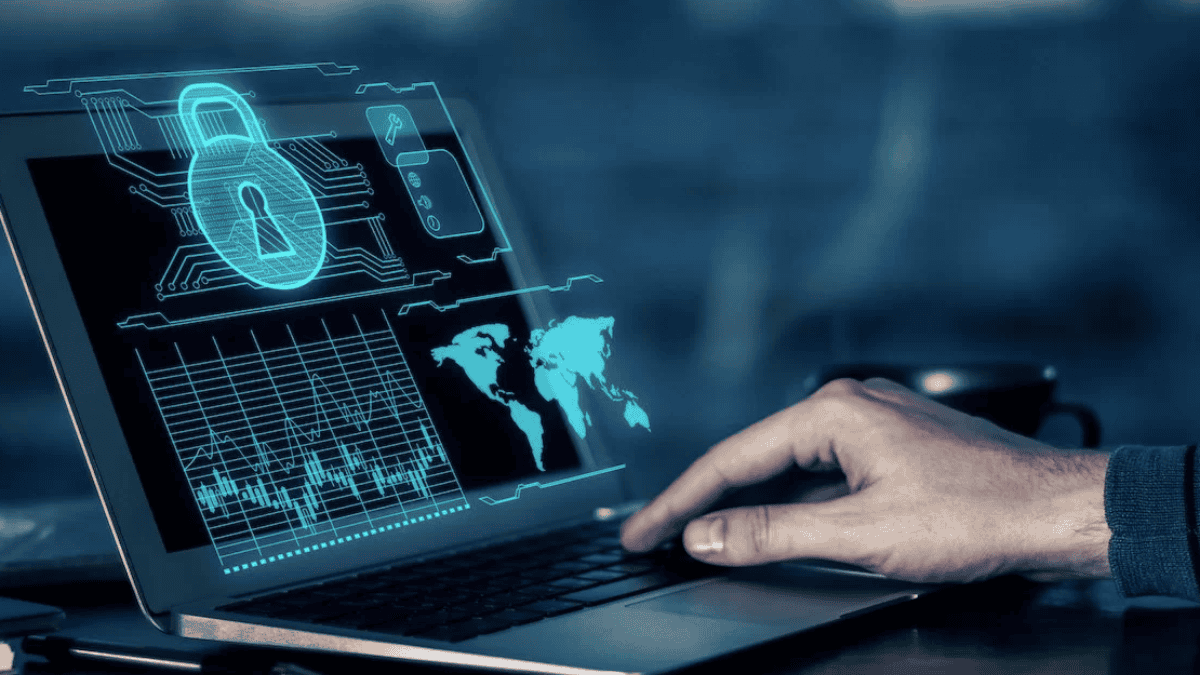Digital forensics involves the process of discovering, securing, examining, and presenting digital data in a way that can be accepted in a court of law. This field encompasses the recovery of data from various digital devices, such as computers, smartphones, and servers. Its primary goal is to uncover artifacts related to criminal activities or cyber incidents, ensuring a systematic approach to handling digital material within the broader context of cyber security.
The key areas of digital forensics include:
| Area | Description |
| Acquisition | The process of collecting digital evidence without altering it. |
| Preservation | Maintaining the integrity of the collected evidence for analysis. |
| Analysis | Examining and interpreting the data obtained from digital devices. |
| Presentation | Documenting findings in a clear, structured manner for legal purposes. |
Importance of Digital Forensics in IT Security
The significance of digital forensics in IT security cannot be overstated. As cyber threats continue to evolve, SMEs must adopt robust strategies to safeguard their digital assets. Digital forensics plays a crucial role in incident response and the overall security posture of an organization.
Some of the reasons why digital forensics is essential in IT security include:
| Benefit | Explanation |
| Incident Response | Enables organizations to respond swiftly to security breaches, minimizing damage. |
| Evidence Gathering | Collects crucial evidence necessary for legal proceedings and investigations. |
| Threat Analysis | Assists in understanding the nature of cyber incidents and the methods used by attackers. |
| Security Improvement | Informs organizations about vulnerabilities and helps strengthen defenses. |
| Compliance | Aids in meeting regulatory requirements by documenting security incidents. |
Employing digital forensics, SMEs can enhance their security measures, protect sensitive data, and fulfill legal obligations. Understanding the basics of digital forensics is vital for businesses aiming to bolster their IT security frameworks.

Key Concepts in Digital Forensics
Effective digital forensics involves understanding several critical concepts that lay the foundation for retrieving and analyzing digital evidence. This section will cover the acquisition and preservation of digital evidence, the analysis and examination of digital data, and the reporting and presenting of findings.
Acquisition and Preservation of Digital Evidence
The first step in digital forensics is the acquisition of evidence, which must be collected in a manner that maintains its integrity. This involves using specific techniques and tools to ensure that the evidence remains unaltered during the process of collection.
Key practices in the acquisition and preservation of digital evidence include:
- Creating Forensic Images: A bit-for-bit copy of the original data allows for analysis without risking damage to the source.
- Maintaining Chain of Custody: Documenting each step of the evidence handling process to ensure its authenticity.
- Using Write Blockers: Devices that prevent data from being written to a drive during examination.
Analysis and Examination of Digital Data
Once the evidence is acquired and preserved, the next phase involves analyzing and examining the data collected. This stage is crucial for identifying relevant information and correlating evidence to a specific incident.
Key aspects of data analysis include:
- Data Recovery: Techniques for retrieving deleted or corrupted files.
- Data Filtering: Sorting through large volumes of data to find pertinent information.
- Pattern Recognition: Identifying trends or anomalies in the data that may indicate security breaches.
Reporting and Presenting Findings
The final step in the digital forensics process involves accurately reporting findings and presenting them in a digestible format. This is essential for both internal reviews and potential legal proceedings.
Important elements of reporting include:
- Detailed Documentation: Providing comprehensive records of the investigation methodology and findings.
- Clear Visuals: Using charts, graphs, or tables to effectively communicate results.
- Summary Reports: Concise overviews tailored for various stakeholders, such as management or legal teams.
Understanding these key concepts in digital forensics empowers organizations to handle incidents more efficiently and effectively, enhancing their overall security posture.
Tools and Techniques in Digital Forensics
Digital forensics relies on diverse tools and methodologies to collect, analyze, and preserve digital evidence effectively. Understanding these fundamental tools and techniques is essential for any organization looking to enhance its security posture.
Forensic Imaging Tools
Forensic imaging tools are vital for creating exact replicas of digital storage devices. These tools capture all data, including deleted files, ensuring that a complete picture of the digital evidence is obtained. The imaging process is crucial for preventing any alteration of the original data.
| Tool Type | Description |
| Disk Imaging Tool | Creates a bit-by-bit copy of a hard drive |
| Memory Imaging Tool | Captures the volatile memory of a system |
| Network Imaging Tool | Records data packets traveling over a network |
Data Recovery Methods
Data recovery methods are employed to retrieve lost or deleted information from storage devices. These techniques are essential in situations where information may be critical for investigations or security assessments. Various methods exist, including software-based recovery and hardware solutions.
| Method | Effectiveness | Use Case |
| File Carving | High | Recovering files from unallocated space |
| Logical Recovery | Medium | Retrieving deleted files from file systems |
| Physical Recovery | High | Accessing data from damaged drives |
Chain of Custody Procedures
Chain of custody procedures ensure that digital evidence remains secure and is documented meticulously from the moment of collection through to presentation in court. Maintaining a clear chain of custody is crucial for the integrity of the evidence.
| Step | Description |
| Collection | Gathering digital evidence from devices or networks |
| Documentation | Recording details such as date, time, and collector |
| Storage | Securely storing evidence to prevent tampering |
Understanding and utilizing these core tools and techniques can significantly enhance an organization's capability to conduct effective digital forensic investigations. Each tool and method plays a role in ensuring that digital evidence is collected, preserved, and analyzed properly for various IT security purposes. Since many cyber incidents stem from human manipulation rather than technical flaws, it’s also essential to be aware of deceptive strategies used by attackers—something we explore further in our article, 5 Common Social Engineering Tactics You Shouldn’t Ignore.
Digital Forensics in Practice
Digital forensics plays a crucial role in the field of information technology. It encompasses various aspects, including incident response and investigation, legal and ethical considerations, and real-world case studies. This section delves deeper into these elements to provide a comprehensive understanding of the basics of digital forensics.
Incident Response and Investigation
Incident response is the organized approach to addressing and managing the aftermath of a security breach. With digital forensics, IT professionals can effectively investigate incidents to determine the cause, impact, and extent of the breach. This process typically involves several key steps:
| Step | Description |
| Detection | Identifying the occurrence of a security incident. |
| Containment | Limiting the damage by isolating affected systems. |
| Eradication | Removing the cause of the incident and any malicious code. |
| Recovery | Restoring systems to normal operations. |
| Lessons Learned | Analyzing the incident to improve future responses. |
Each step is essential to ensure a thorough investigation and to bolster the overall security posture of an organization.
Legal and Ethical Considerations
Digital forensics operates within a framework that requires compliance with legal and ethical standards. Professionals in this field must be aware of laws related to digital evidence and privacy rights to avoid potential legal repercussions.
| Legal Aspect | Description |
| Admissibility | Evidence must meet specific criteria to be accepted in court. |
| Privacy Laws | Compliance with privacy regulations is essential when handling personal data. |
| Chain of Custody | Proper documentation of evidence collection and handling is critical to maintain its integrity. |
Adhering to these legal and ethical considerations ensures that digital investigations are conducted professionally and maintain the trust of stakeholders.
Enhancing Security with Digital Forensics
Digital forensics plays a vital role in strengthening security measures for organizations. By understanding and implementing the basics of digital forensics, businesses can better protect their systems and data.
Proactive Measures for Preventing Cyber Incidents
Implementing proactive security strategies significantly reduces the risk of cyber incidents. Some common measures include:
| Proactive Measure | Description |
| Regular Security Audits | Conduct periodic assessments to identify vulnerabilities in the system. |
| Employee Training | Provide training on cybersecurity awareness and best practices. |
| Incident Response Plan | Develop and maintain a clear plan for responding to security incidents. |
| Software Updates | Ensure that all software is up to date to mitigate known vulnerabilities. |
These proactive measures contribute to a more secure organizational environment, ultimately preventing potential cyber threats.
Utilizing Forensic Findings to Strengthen IT Security
Forensic findings provide valuable insights into security events. By analyzing digital evidence, organizations can understand attack vectors and enhance their security posture. Key actions include:
| Action | Benefit |
| Threat Analysis | Identify common patterns and tactics used in security breaches. |
| Security Policy Updates | Revise security policies based on the findings to prevent future incidents. |
| System Improvements | Implement technical upgrades to fortify vulnerabilities identified during analysis. |
Utilizing the information gathered from forensic analyses, organizations can create a more resilient IT security framework.

Training and Education in Digital Forensics
Educating team members on digital forensics principles is crucial for fostering a security-oriented culture. Training programs can focus on various areas:
| Training Area | Focus |
| Basics of Digital Forensics | Introduce fundamental concepts and terminology in digital forensics. |
| Incident Response | Teach methods for quickly and effectively responding to cybersecurity breaches. |
| Forensic Tools and Software | Train on the use of forensic tools and techniques for evidence collection and analysis. |
Upgrade Everything — LK Tech.
Enhancing knowledge in digital forensics empowers employees to identify threats early and respond with precision, leading to stronger, more secure practices across the organization. At LK Tech, we deliver top-notch IT support tailored to meet your unique business needs, helping you stay ahead of evolving cyber threats with confidence. We focus on proactive strategies and expert guidance to keep your systems protected. When you’re seeking reliable IT services in Cincinnati, you can count on our team to deliver results. Contact us today to explore how we can strengthen your digital defenses.


